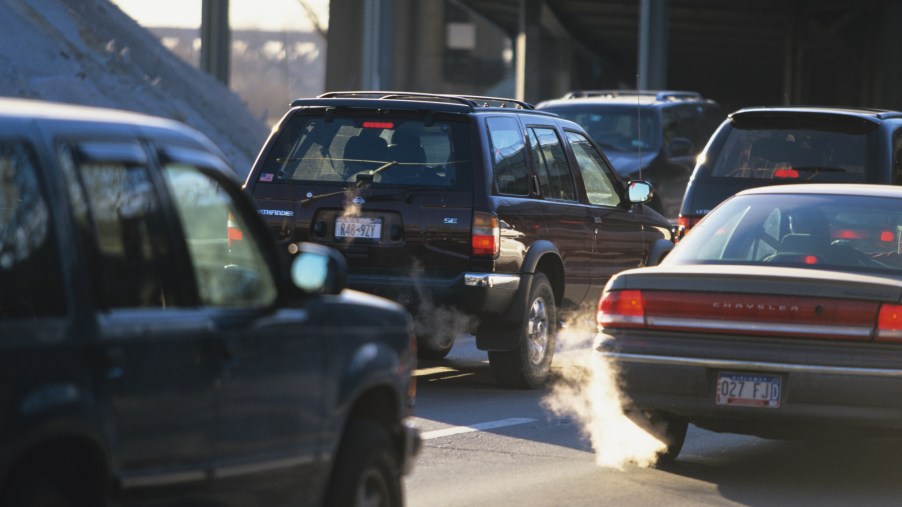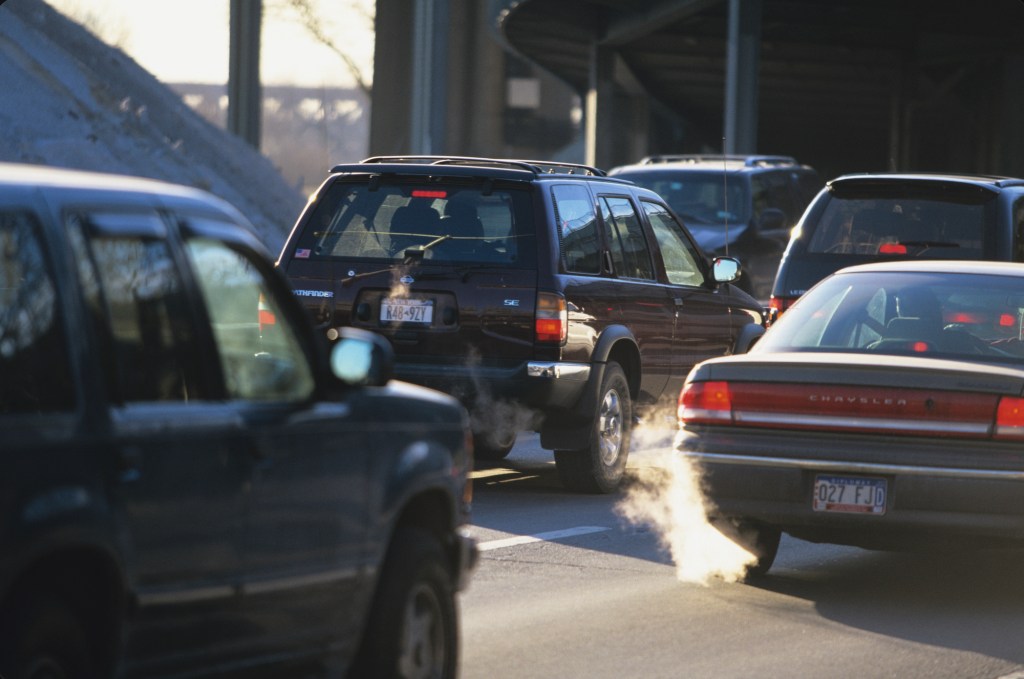
Why Idling Is Bad for Your Car
You might let your car idle while you’re parked for a few minutes, stuck in traffic or at a red light, in the drive-through line, waiting for school pick-up, or in the winter if you want the heater to warm up. But is it bad for cars to idle too long? We take a look at whether you’re killing your vehicle by letting it idle a lot.
What happens when a car idles?

When a car idles, the engine runs at low power, but the car isn’t moving. It might be in park or have the brake on. The engine continues using gas and keeps warming. In addition, other systems, like the battery and air conditioning, continue operating as well. Some drivers leave a car idling because they’ve heard that stopping and starting the engine can hurt the vehicle. However, this is just a myth for most cars.
How long is it OK to idle your car?
There are several reasons that idling is bad for your car. For one, your engine could overheat while idling, but that’s likelier to happen if there’s an existing mechanical problem. However, running the car over time causes deterioration of the head gasket, spark plugs, and cylinder rings.
The biggest issue, however, is with how long it takes to warm up. An idling car takes longer to warm up, so your engine is running on cold oil for longer. That cold oil doesn’t lubricate or protect as well as warm oil. Instead, gently driving will warm up your engine faster, which is easier on your engine than letting it idle to warm it up.
In addition, you also risk draining the battery because the slow-running engine is pulling power from the system. The alternator keeps charging the battery while the car is idling, but other electrical parts, like the headlights and radio, may also be drawing power from the battery.
It’s best to limit idling to a few minutes at a time. After that, turn off the car or move it. J.D. Power recommends that even when driving in traffic. It’s still fine to turn off your car while stuck in a traffic jam that moves only a little every few minutes. Newer cars with a stop-start feature do this automatically.
Also, vehicles built since the 1990s have fuel injection parts and are fine to stop and restart. If you’re driving an older car, stick with idling rather than stopping and starting multiple times. Also, if your car is nearly out of gas, you should continue idling rather than stopping and starting it. Starting the engine generally uses more gas than leaving it on briefly.
Is idling your car illegal?
An idling car wastes gas and burns oil, which is bad for the environment. Running the car for two minutes burns the same amount of gas as driving for a mile. Running the car for more than an hour burns up almost a gallon of gas, WBTV reports. In addition, burning more oil means more frequent oil changes as well.
Using gas and oil also creates emissions, increasing air pollution and environmental impact. For this reason, some states have laws restricting idling. According to the U.S. Department of Energy, “Idling for more than 10 seconds uses more fuel and produces more emissions that contribute to smog and climate change than stopping and restarting your engine does.”
Letting your car idle is a bad idea
If reducing emissions isn’t enough to persuade you not to idle, know that turning off the car saves gas costs. In addition, it risks a mechanical problem, an empty gas tank, or a drained battery. It’s also a bad idea for environmental reasons.



